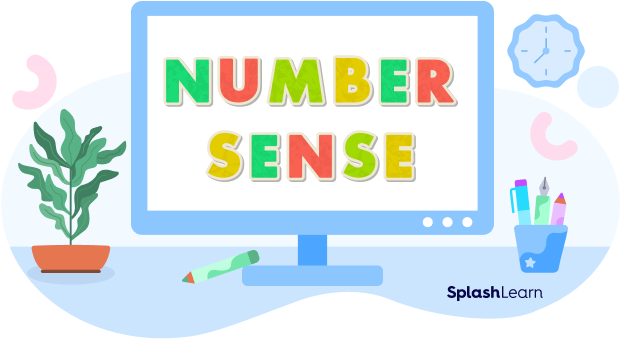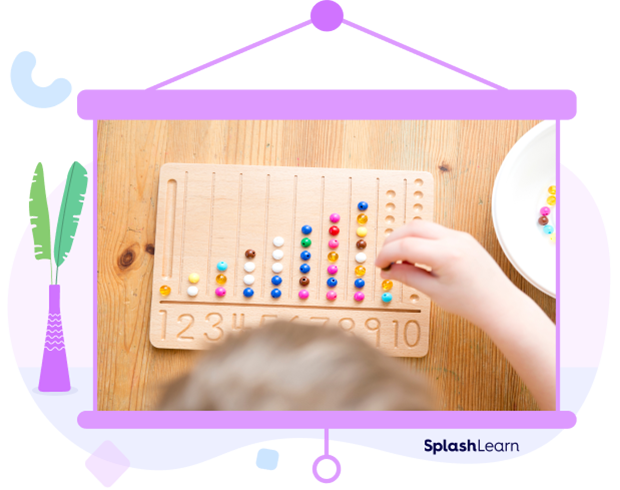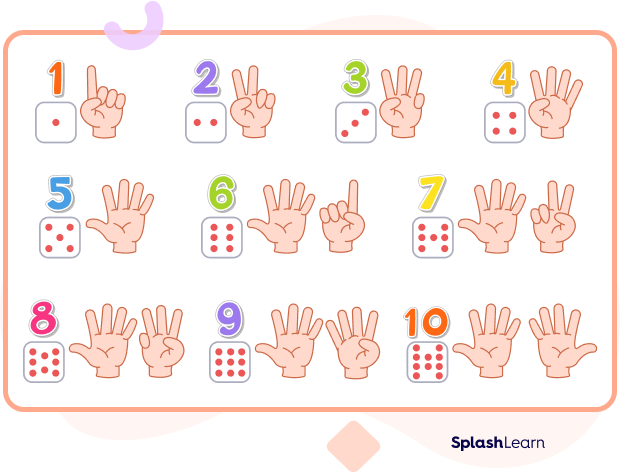
What Is Number Sense in Math?
Number sense refers to a person’s ability to work with numbers, understand their quantities, and use them in meaningful ways. It encompasses the understanding of concepts like comparing numbers, determining their values, and recognizing their significance in various contexts.
In early childhood, number sense starts developing naturally as children make simple comparisons, such as choosing a larger piece of cake or understanding when something is taken away. These experiences lay the foundation for understanding addition and subtraction.
As educators and caregivers, we play a crucial role in helping children build a strong number sense by connecting these early experiences to a deeper understanding of numbers. By guiding children to comprehend what numbers represent, how they relate to one another, and their relevance in everyday life, we can support their overall mathematical development.
So, let’s dive into the fascinating world of number sense and explore how it shapes a child’s mathematical understanding and growth.

Recommended Games
Definition of Number Sense
Number sense, as defined by Gersten and Chard (prominent researchers in the field of Education) refers to a child’s fluidity and adaptability with numbers. It involves understanding the meaning of numbers, performing mental arithmetic operations, and making comparisons to comprehend the world around them.
Numbers can be represented using symbols, such as 1, 2, 3, or written in words, like one, two, three, and so on. Developing number sense begins with recognizing these symbols and understanding the corresponding numerical values.
To gain a strong number sense, children need to grasp the components that contribute to their understanding of numbers. Let’s explore these components in detail and uncover the building blocks of number sense.
Recommended Worksheets
Essential Elements in Number Sense
Number sense refers to a wide range of math skills. Here are some important components of number sense:
- Counting and Cardinality: Understanding counting, number sequences, and assigning numbers to objects.
- Quantity and Magnitude: Grasping quantity concepts and comparing/estimating quantities.
- Number Relationships: Recognizing patterns, understanding place value, and identifying number families.
- Operations and Computation: Performing mental calculations, solving arithmetic problems, and mastering basic operations.
- Estimation and Approximation: Making reasonable guesses and rounding numbers to specific values.
- Spatial Sense and Number Patterns: Identifying patterns in numbers, shapes, and spatial relationships.
- Real-World Connections: Applying number sense to everyday situations like money, time, measurement, and data.
These components foster a solid foundation in number sense, enhancing a child’s mathematical understanding and problem-solving abilities.
Why Is Number Sense Important?
- Number sense forms a crucial foundation for future math mastery. Understanding number sense helps individuals manage personal finances, such as budgeting and understanding interest rates on loans.
- Strong number sense improves understanding and confidence in working with numbers. Having number sense enables individuals to make informed decisions when comparing prices at the grocery store or calculating discounts during shopping.
- Children with strong number sense can manipulate numbers and employ flexible problem-solving strategies. Being able to estimate tips at a restaurant or mentally calculate sale prices during shopping showcases the practical application of number sense.
- Number sense allows individuals to recognize patterns and connections in numbers, enhancing problem-solving skills. Analyzing trends in data, such as tracking monthly expenses or understanding population growth, requires strong number sense.
- Poor number sense leads to dependence on fixed procedures and inefficient computation methods. Struggling to calculate sale prices or discounts accurately can be a consequence of weak number sense.
- Developing number sense equips individuals with critical thinking and logical reasoning skills applicable in various academic disciplines and everyday life.Interpreting statistical information in news reports or understanding measurements in recipes require number sense skills.
How to Teach Number Sense
We now understand the value of number sense and the effect it can have on the young students in our classrooms. I firmly think that a student can benefit from having a solid grasp of numbers in every area of mathematics. Early focus on number sense builds a solid foundation for later grades when it comes to math and problem-solving that is more complex. Thus, it’s necessary to teach number sense at an early age.
You can teach number sense in the following way:
1. Concentrating on base
The foundation or base is very important while teaching any concept. Give it some time. Before moving on, make sure students are familiar with each idea. Having a strong understanding of place value and how the number system works from the very beginning will help students as they progress through their learning journey in math.
2. Clear Teaching
Each skill must be explicitly taught in a logical sequence. A critical error we can make is assuming a student understands a concept from years ago. The best opportunity to support students in making connections between concepts and ideas is during explicit teaching. It can be done in a variety of ways, such as whole-class teaching and modeling, facilitated groups, small-group work, or one-on-one interaction.
3. Practical Experience
Children learn by using concrete materials. They also enjoy hands-on activities and games – and enjoyment promotes the best kind of learning. It keeps them intrigued and focused and they learn better compared to just board writing and explanations.

4. Review and Revise!
Start with a week devoted to number skills at the beginning of EVERY SINGLE TERM. It aids in concept reinforcement, prepares students for the term, and also enables them to take up new abilities, concepts, and ideas that they might not have been prepared for in the past. Another method to keep reviewing your number concepts and engage your students’ minds is through your daily math warm up.
Facts on Number Sense
- Number sense refers to a child’s fluidity and flexibility with numbers.
- Children gradually and at varying rates acquire number sense through exploration, visualizing numbers in various contexts, and connecting them in ways that aren’t limited by formal written methods.
- Children who have a strong sense of numbers enjoy exploring and playing with numbers and their connections.
- A strong sense of numbers can be developed by seeing numbers in various situations, recognising patterns, and identifying relationships between numbers.
- Number sense is a key component to building a solid foundation for mathematical understanding.
Conclusion
In this article, we learned what number sense is and how it is necessary to have a good number sense. Children benefit from this by better comprehending the meaning of numbers, developing their mental math skills, and gaining the ability to make connections between numbers and arithmetic in the real world. Now let’s solve some examples and practice problems.
Solved Examples on Number Sense
Example 1: Amy is comparing prices at a grocery store to find the best deal. What number sense skill will this activity help Amy? Give some examples of comparing numbers.
Solution:
This activity will help Amy develop her skill of comparing and understanding numerical values, allowing them to make informed decisions based on prices.
We compare numbers using the symbols >, < , or =.
Examples:
- 100 < 102
- 454 = 454
- 545 < 554
- 124 > 121
Example 2: Suppose that you are planning a party and deciding the number of snacks needed for the guests. What number sense skills do you need?
Solution:
To plan a party and the snacks, you need to estimate the number of guests and the appropriate amount of snacks required. You need the math skill of estimation to make reasonable guesses about quantities and plan accordingly.
Example 3: How does solving a math puzzle involving number patterns help children?
Solution:
Solving a math puzzle with number patterns involves recognizing and analyzing number patterns. It enhances their ability to identify relationships and predict future numbers.
Example 4: Give a real life example where you use number sense?
Solution:
Measuring ingredients while following a recipe is a great day-to-day example that requires number sense. This activity will help a child develop their skill of measurement and understanding quantities, enabling them to accurately measure ingredients and follow the recipe’s instructions.
Practice Problems on Number Sense
Number Sense in Math - Definition, Examples, Facts
Which number sense skill involves understanding the concept of more or less?
The concept of more or less refers to comparing numbers.
An item costs $\$9.5$, but Anna assumed it to be $\$10$ for finding the approximate price of 7 suchitems. Which skill did she use?
Anna rounded 9.5 to 10 which helped her estimate the price of 7 items.
Write the correct number for the following. 2000 + 200 + 20 + 4
2224
Frequently Asked Questions on Number Sense
At what age do kids learn numbers and start counting ?
Children develop the ability to understand the actual concept of counting generally around the ages of two and four. By the age of four, children usually can count up to 10 and/or beyond.
What is subitising?
Subitising is instantly recognizing the number of objects in a small group, without counting. For example: knowing there are 5 coins here (without counting them).
How and when does number sense begin?
An intuitive sense of number begins at a very early age. Children as young as two years of age can confidently identify one, two or three objects before they can actually count with understanding (Gelman & Gellistel, 1978) But they understand the actual concept of counting generally around the ages of two and four.
Can 2 year olds recognize numbers?
By age 2, a child can count to two (“one, two”), and by 3, he can count to three, but if he can make it all the way up to 10, he’s probably reciting from rote memory. Kids this age don’t yet actually understand, and can’t identify, the quantities they’re naming.
Is number sense a skill?
Number sense refers to a group of skills. It can be learned or improved upon with time, practice, and determination.
What does number sense mean? What are examples of number sense fluency?
Understanding numbers and how they interact is known as having number sense. Children in the primary grades, for instance, learn how to separate and combine numbers when they experiment with and develop fluency with ideas like how to make 10 and how to break up 12 into 10 and 2.




































